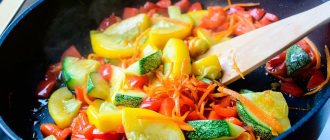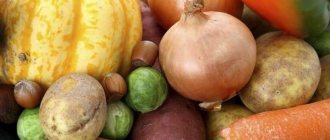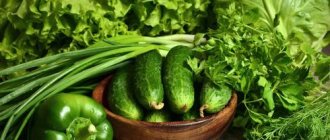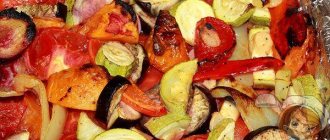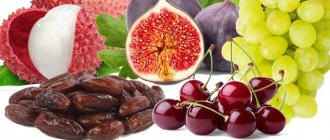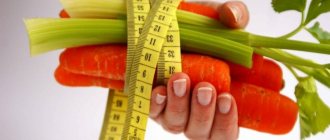When it comes to raw and cooked vegetables, the question is which is the best way to eat them to get the most nutrients? Find out what scientists and experts have to say about the healthiest ways to cook vegetables.
The raw food diet gets a lot of attention. Some people believe that raw food contains more nutrients. Or that cooking kills natural plant enzymes as well as vitamins and minerals.
Others say that cooked food is easier to digest, healthier, and sometimes even tastier.
So what's the truth about raw and cooked vegetables? How should you eat vegetables to get the most benefits?
Are more nutrients always better?
Raw vegetables often contain more nutrients. Therefore, many people think that they are healthier. And sometimes it's true. But the reality is more complex.
The point is not what you eat, but what our body can absorb.
A 2010 study published in the American Journal of Clinical Nutrition on a group of women some following a regular Western diet, others a healthy diet (based on healthy eating guidelines) and a third group following a raw food diet found that more nutrients were not always better.
For example, participants in the raw food group consumed more beta-carotene per day than participants in any other group. But participants in the healthy eating group absorbed most of this essential antioxidant.
When we cook vegetables, some nutrients are lost. But, at the same time, others begin to be absorbed more easily.
Steamer or saucepan?
It would seem that both a steamer and a saucepan are suitable for preparing healthy lunches. Still, preference should be given to steamed vegetables. During cooking, food comes into contact with water, which washes out water-soluble vitamins. Scientists have proven that cooked peas, cauliflower and zucchini leave about half of the antioxidants in the pan, and broccoli, beloved by nutritionists, which is not recommended to be eaten raw to avoid bloating, contains vitamins C, B1 and folic acid. If you don't intend to use the vegetable water as a base for soup in the future, the beneficial microelements will go straight to the sink. Agree, not the best deal.
But there are also exceptions. For example, both boiling and steaming increase the amount of beta-carotene in carrots. You just need to cook it whole, otherwise there will be losses - chopped pieces will leave about a quarter of the minerals and vitamins in the water. By the way, here's another tip for you: wash vegetables immediately before cooking to prevent the spread of bacteria and food deterioration.
Benefits of Cooked Vegetables
In addition to beta-carotene, some other antioxidants, such as lutein (good for the eyes) and lycopene (which helps protect the heart and bones), are also better absorbed in cooked vegetables
Boiled vegetables contain more minerals. Heating releases bound calcium, making more minerals available for absorption by the body. And the difference can be significant. Cooked spinach contains 245 mg of calcium per cup, while raw spinach has only 30 mg per cup!
Cooking can have other benefits:
- Helps you chew food better
- Increases digestibility
- Increases the net energy value of foods
Additionally, some evidence suggests that cooked foods have contributed to human brain development because they “significantly increase calorie intake by making food easier to chew, digest, and assimilate.”
Boiled or raw? The more vegetables in your diet, the better. Cook vegetables if you know you will eat more cooked.
What cooking methods should you avoid?
During frying, free radicals and carcinogens are formed, which cause serious harm to the cells of the body.
Fried foods also often contain trans fats, unsaturated fats that have been hydrogenated and linked to cancer, diabetes, heart disease and obesity.
And when it comes to preserving antioxidants in vegetables, steaming is better than boiling.
Why? Because during cooking, some of the nutrients are released into the water.
With that said, eating more cooked vegetables can make up for the loss. In addition, you can use water after cooking vegetables to prepare other dishes; it contains useful substances.
Benefits of Raw Vegetables
Eating phytonutrients found in plant foods is associated with a reduced risk of some chronic diseases, such as heart disease and stroke, cancer and age-related eye diseases.
But many of these beneficial compounds can be destroyed by heat and many types of food processing.
Additionally, water-soluble vitamins such as vitamins C and B are leached during the cooking process. According to a 2007 review published in the Journal of the Science of Food and Agriculture, up to 55% of the vitamin C in vegetables is lost during cooking, compared to eating them raw.
Eating raw vegetables can also improve mental health and relieve symptoms of depression. A 2021 study published in the journal Frontiers in Psychology found that people who consumed more foods in their natural, raw form reported higher levels of psychological well-being compared to those who ate mostly cooked foods.
For those watching their weight, eating raw foods can be beneficial because it requires more chewing, which slows down the process of food absorption.
Microwave, frying pan or oven?
The microwave oven quickly makes food ready to eat without excess liquid or oil. It warms vegetables from the inside, retaining substances that are usually lost during heat treatment, such as vitamin C. Take note: after exposure to the microwave, zucchini, carrots and beans are richer in essential phytonutrients - plant compounds that support health and protect the body from disease , - than their versions prepared in some other way.
By baking food in the oven, you will get not only tasty, but also healthy dishes. This primarily applies to asparagus, onions and legumes. Baked artichokes, broccoli, celery and spinach will also not lose their properties. Oven-cooked tomatoes are high in lycopene, an antioxidant that reduces the risk of Alzheimer's disease and cancer. Moreover, tomatoes can be cut into pieces, but you should not peel off their skins and throw away the tomatoes, which contain the bulk of the vitamins.
The most controversial way to prepare vegetables is roasting. It is important to fundamentally distinguish between cooking in a frying pan, greased with a small amount of oil, and deep-frying. During deep-frying, the oil penetrates the food, making even low-calorie foods fatty, while frying vegetables in a little extra virgin olive oil does not reduce their value. Olive oil is an excellent source of antioxidants. It improves the taste of foods and helps preserve water-soluble vitamins and nutrients found in vegetables, such as eggplant.
Back Next
What about enzymes in raw foods?
Proponents of a raw diet often point out that raw plant foods contain natural enzymes. These enzymes have digestive and other health benefits that are destroyed by heat. And from a certain point of view they are right.
Heating destroys enzymes. But we ourselves produce digestive enzymes, and healthy people have no problems synthesizing the enzymes necessary for digestion. In addition, most plant enzymes are destroyed in the human intestine anyway.
So, although consuming enzymes found in raw fruits and vegetables may provide some digestive benefits, there is little evidence to support that this is the main reason for eating raw foods. Of course, there are other good reasons to include plenty of raw foods in your diet.
The best way to ensure you have enough enzymes to support digestion is to maintain overall digestive health. (To improve your gut health, read this article.)
Why Eating Too Much Cruciferous Vegetables Can Harm Your Health
Can cabbage be harmful? Sometimes it can.
Eating too many raw cruciferous vegetables can lead to hypothyroidism, a condition in which the thyroid gland does not produce enough thyroid hormones.
“Large quantity” – how much? According to a 1993 study published in the Journal of the Science of Food and Agriculture, 10 cups of raw kale per day is the limit.
Also, the amount depends on the type of cruciferous vegetables. The cruciferous family includes: cabbage, asparagus cabbage, Brussels sprouts, cauliflower, kohlrabi, broccoli, watercress, kale, rapeseed, horseradish, radishes, turnips, rutabaga, Chinese cabbage, mustard seed.
Theoretically, you can eat 50 cups of raw cauliflower per day. But only three glasses of raw mustard a day. One study found that a woman who ate 15 cups of raw bok choy per day for several weeks fell into a hypothyroid coma.
But a reasonable amount of raw cruciferous vegetables will do. And the goitrogenic properties of kale and other cruciferous vegetables disappear when you cook them. So, the best approach is to eat some raw and cooked cruciferous vegetables, and include more colorful vegetables in your diet.
Broccoli is not very good for the thyroid gland
Vegetables such as broccoli , cauliflower, cabbage and turnips in people with hypothyroidism can interfere with the synthesis of thyroid hormones if consumed in excess. Fortunately, heat treatment reduces the content of substances that bind to iodine , preventing its inclusion in tyrosine molecule . Therefore, in case of thyroid diseases, instead of raw broccoli, you should choose vegetables cooked in steam or in water . One study also found that cooked broccoli contains 26 % more beta-carotene compared to raw broccoli .
How to Best Cook Cruciferous Vegetables and Garlic for Maximum Benefits
If you want to cook broccoli and other cruciferous vegetables, including Brussels sprouts, kale, cauliflower, radishes, rutabaga, turnip greens and arugula, here are three science-backed steps you can take to maximize their health benefits:
- Pre-cut them and let them sit for 40 minutes before cooking.
- Add some mustard seed powder (or some daikon radish, horseradish or wasabi) after cooking, or
- Add a small amount of fresh raw cruciferous vegetables to cooked ones.
Here's how to get the most out of boiled garlic:
- Allicin, which fights cancer, is relatively heat stable. If you want to cook the garlic, crush or mince it and wait 10 minutes before cooking. This will allow allicin to form.
Benefits of Boiled Vegetables
There are vegetables that are recommended to be consumed only boiled:
- beets, rich in anthocyanins and flavonoids;
- zucchini, which contains large quantities of potassium and prevents the development of atherosclerosis.
This method of consuming vegetables is more necessary in winter, since at this time of year a person needs hot and easily digestible food. In addition, eating boiled vegetables is more beneficial than raw vegetables during illnesses, including influenza and similar viral infections, as well as problems with the gastrointestinal tract. Eating vegetable soups is good for health; they promote weight loss and normalize the water-salt balance of the body.
Thus, a person needs to choose the right diet for health reasons. The main thing is that the food spectrum is varied and balanced. In most cases, a person needs both raw and cooked fruits. You need to listen to your condition and change your diet if necessary.
Tags: raw food diet
Can a raw food diet be good for your health?
A raw food diet typically contains 70% (and sometimes 100%) foods that have not been cooked or processed. To be considered raw, food cannot be heated above 40 degrees Celsius (104 degrees Fahrenheit). Instead, people on a raw food diet consume a lot of fresh, dehydrated and fermented foods.
There are thousands of anecdotal reports of people using a raw food diet to treat conditions such as acne, autoimmune diseases, candida, cancer and a variety of other diseases. However, there are several scientific studies that support these claims.
Here are some studies that have shown positive results:
- A 2000 study published in the Scandinavian Journal of Rheumatology found that a raw, low-salt vegan diet helped relieve fibromyalgia symptoms.
- A 2009 study published in the journal Complementary Therapies in Medicine found that people who stayed one to three weeks at a vegan retreat center had improved mental and emotional health.
Fermented vegetables
Silage is a source of vitamin C and probiotics . The process of pickling (fermenting) vegetables occurs without the participation of temperature, but its extremely positive effect on the properties of the raw materials used cannot be ignored. During fermentation, vegetables receive large amounts of lactic acid , which is formed when sugars by bacteria. This is lactic acid, which supports digestion, cleanses the body and supports the development of normal bacterial flora. Homemade silage is a natural source of probiotics , which are beneficial bacteria that inhabit the intestines. Cabbage and cucumbers are best suited for processing .
Sauerkraut contains vitamins C and E, carbohydrates, calcium and phosphorus, and antioxidants (carotenoids and polyphenols). Its antiradical activity also increases during fermentation. Sauerkraut is low in calories and sugar and at the same time improves intestinal motility is recommended for diabetics and people who want to lose weight .
Pickled cucumbers are characterized by a high content of vitamins K (several times higher than in raw ones) and C (2 times). The latter has a wide spectrum of action - neutralizes reactive oxygen species , slows down the aging process , reduces cholesterol and DNA , and regulates blood pressure . Some even believe that vitamin C can counteract cancer , and its deficiency, often found in the population, is the cause of the development of many diseases of civilization.
The nutrient found in carrots is beta-carotene . This powerful antioxidant and vitamin A prevents atherosclerosis , improves visual acuity (especially at dusk), protects the digestive tract , slows down the aging process and strengthens the immune system . Beta-carotene is resistant to high temperatures, which is confirmed by scientific research. According to one such study, the bioavailability increases significantly after steaming carrots because the vegetable cell membranes soften during this process. Compared to raw food, it also has 3 times more antioxidants . By frying carrots in olive oil, beta-carotene is better absorbed when eaten with fat . However, there is also a flip side to the coin - cooked carrots have a higher glycemic index (GI), so people with insulin resistance and diabetes are recommended to eat raw vegetables .
Why a raw food diet may not be beneficial in the long term
Although a raw food diet has been found to produce remarkable results in the short term, it is a difficult eating system to follow. Raw food diets also tend to be time-consuming and not conducive to long-term health.
Chris Wark, who has included a raw food diet in his cancer-fighting efforts, in addition to lifestyle changes, says: "Raw food can heal, but not in the long term."
Dr. Michael Greger says switching to a raw food diet can improve your health because it is an extremely healthy diet.
He says, “One of the benefits of a raw diet over a vegan diet is that it gets rid of all the food junk.” (For example, vegan marshmallows and donuts.)
The researchers also found that long-term adherence to a raw food diet can lead to significant weight loss, which can cause health problems due to being underweight, including amenorrhea in women, a condition in which menstruation stops.
And a 2005 study published in the Archives of Internal Medicine linked a 100% raw plant-based diet to lower bone mass, which is typically a sign of osteoporosis and an increased risk of fractures.
Raw + cooked = winning combination for health
Most nutrition experts agree that you need both raw and cooked vegetables to get the maximum amount of vitamins and minerals.
While some may be better cooked and others raw, the bottom line is this: more fruits and vegetables are better, period.
“We should eat plenty of raw foods every day, but to think that a diet consisting of 100% raw foods is better than a diet with steamed vegetables or soup is simply a misrepresentation of the science,” says Dr. Joel Fuhrman.
He recommends starting lunch and dinner with a large serving of raw salad or raw vegetables. And then you can eat cooked vegetable food.
Eat your vegetables the way you want and listen to your body
It is well known that people who eat more vegetables and fruits are less susceptible to chronic diseases.
When it comes to eating healthier, more colorful fruits and vegetables, it's best to eat them the way you like them.
As Dr. Michael Greger says, "The best way to eat vegetables is whichever way will make you eat more of them, with the exception of frying, which simply adds too many empty calories."
And when it comes to raw and cooked, listen to your body and find the balance that works for you because we are all unique. You may want to change your diet depending on the time of year, changes in your health and age. But ultimately, what's most important for our health is to eat more vegetables in any form, raw or cooked.
Boiled vegetables are healthier than raw ones
Vegetables and fruits contain a lot of vitamin C, beta-carotene (vitamin A) and potassium. Other microelements and vitamins are also there, but in smaller quantities. Scientists from the English Institute of Food Research have proven that they are better absorbed from boiled vegetables.
Getting potassium from baked vegetables
It has been proven that we absorb five times more carotenoids from boiled carrots than from raw ones. And raw carrots can be harmful for children: pectin and fiber, which are contained in excess in the raw vegetable, have a negative effect on the fragile pancreas. In addition, boiled carrots increase the amount of antioxidants necessary for immunity.
In general, raw vegetables are not recommended for people with pancreas problems. Moreover, they contain potassium, which is necessary for the muscles and, first of all, the heart. But you can get potassium without harming the pancreas.
To do this, you just need to bake the vegetables in the oven. Moreover, preferably with the peel - both in eggplants and potatoes, the concentration of potassium increases when they are baked “alive”, unpeeled. Or grill vegetables. There is also a lot of potassium in compotes, especially from dried apricots.
Tomato helps blood vessels
Of course, when boiling or baking, vegetables lose some of their vitamins, but the remaining beneficial substances are absorbed by the body much better. For example, from stewed or boiled tomatoes, lycopene is one of the best antioxidants that helps maintain vascular tone.
By the way, the same English scientists proved that lovers of a raw food diet suffer from a lack of calcium in the body - raw vegetables contain a lot of strontium, which interferes with the absorption of calcium. Therefore, vegetarians are more often diagnosed with osteoporosis.
In total, nutritionists recommend consuming no more than 300 - 400 grams of vegetables and fruits per day.
Tangerines - for bronchitis
The most New Year's fruits - tangerines - contain a large amount of vitamin C (although less than other citrus fruits), as well as fiber, pectins, and phytoncides. Tangerine juice is useful for colds and perfectly quenches thirst at high temperatures. This citrus improves metabolism, increases appetite and contains the substance synephrine, which has anti-edematous properties, so it is very useful for bronchitis.
BUT! If you have kidney disease, you should not eat them. As well as with gastritis with high acidity, ulcers, inflammatory bowel diseases.
BY THE WAY
Champignons lower cholesterol levels
American scientists from the University of Illinois have found that edible mushrooms such as champignons, in addition to protein and vitamins, contain unsaturated fatty acids and are rich in chitin. They can lower cholesterol levels and, as a result, improve heart function. Scientists recommended that mushrooms be included in the diet.
Table of energy value of products
(in 100 grams)
Interactive calorie table here
